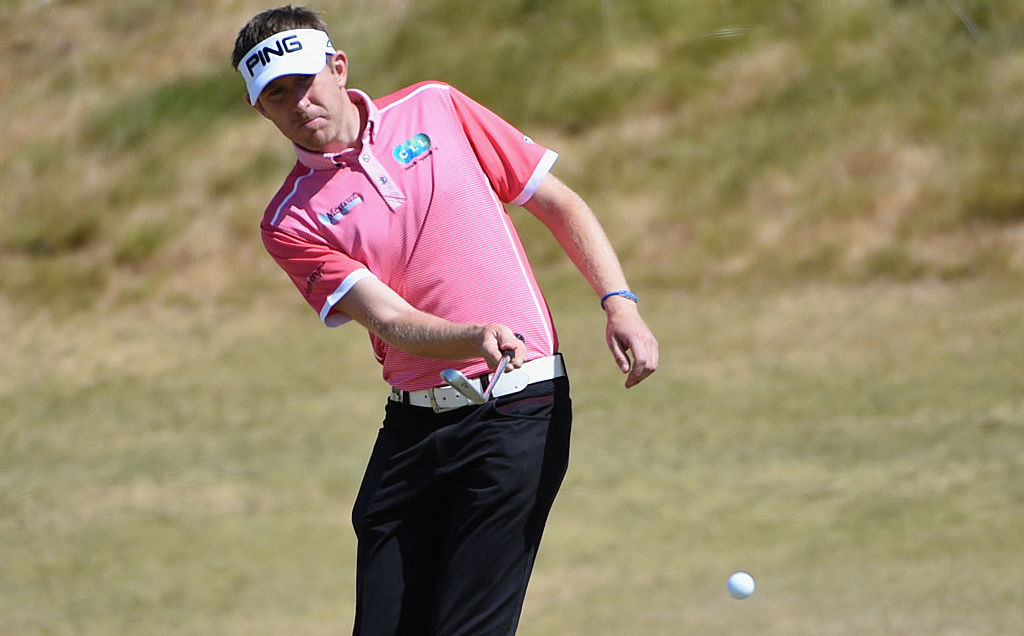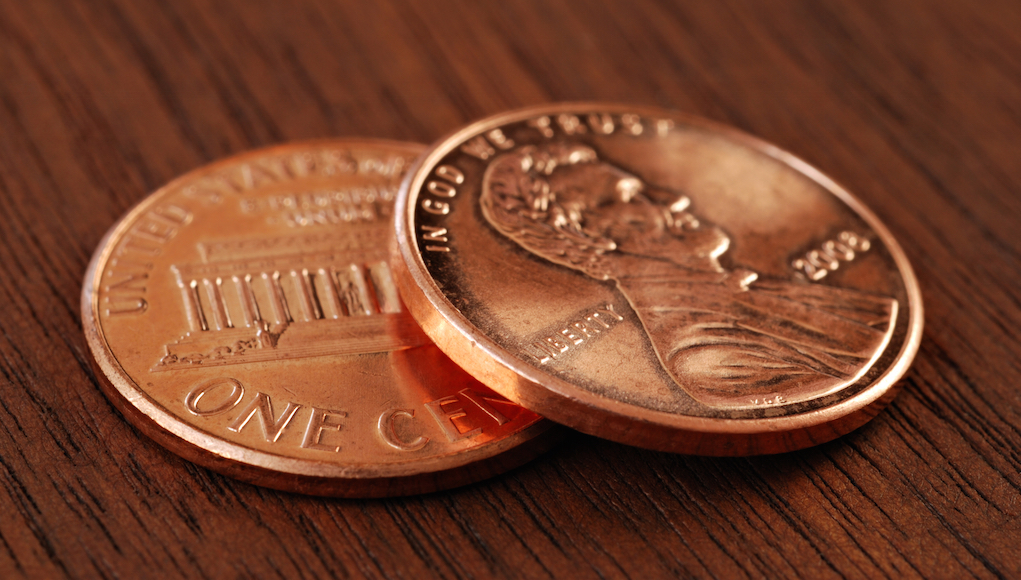Instruction
One Club Maestro: Swing It Like Seve, For Shotmaking Mastery!

Each year I have the pleasure of working with nearly 400 kids at my summer camps in Pebble Beach, Calif. One of the highlights of the camp experience is the “One Club Tournament” held at the Peter Hay Par-3 course. The premise behind the exercise is to instill the mindset and skills associated with creative shotmaking.
I always begin by sharing the story of the great Seve Ballesteros, who learned to play the game as a young boy on the beaches of Spain using only a 3 iron. With only one club to work with, Seve became a master of creative problem solving by learning how to effectively alter the functionality of his equipment to produce literally any shot.
This exercise is about imagination and stretching the boundaries of what you believe is possible. As you work through each challenge, you’ll unlock the secrets to great shotmaking and effectively increase your Golf IQ.
To get started, try to successfully complete each shot with a 6 iron as demonstrated below. If you can pull that off, you’re welcome to go for the “full” Seve and see what you get!
Roll The Rock
Great putting is “all about the roll!” That means being able to create pure contact that keeps the ball hugging the turf as it hunts down the cup. Every golf shot, putting included, is comprised of a relationship in which the swing path, club face, angle of attack, dynamic loft, speed and impact point work together to produce the result associated with each effort.
A great way to quickly simplify your putting approach is to roll a few putts with your 6 iron. You may have seen this done before with a sand wedge. This is probably a touch more effective due to the shortened length of the club, but since we’re sticking with one club for all of these shots, the 6 iron works just fine.
Grip down on the club so it feels more like a putter in length. Hover the head above the turf so the leading edge is lined up with the ball’s equator. As you make your stroke, focus on creating a level strike that catches the ball on or just above the equator. You’ll find that producing a solid hit will also occur most easily with a compact motion that has minimal arc and face rotation.
Following a few successful strikes, transfer the same feeling into your actual stroke using your putter. In only a few minutes, you’ll gain a new appreciation for the subtleties associated with developing a pure roll.
Great Scot
Nothing is more fun than playing true links golf. The best part for me is letting go of mechanical thoughts and performing purely from imagination and instinct. When faced with a shot that would normally require a lofted pitch, use your 6 iron instead to conjure a shotmaking masterpiece that bounds the ball across the turf. This is where you really learn to become an effective problem solver, as only a well thought out plan will get the ball to finish close.
Take a quick walk up to the putting surface and “read” the turf in the same way you would read the green for a putt. Like a set of falling dominos, imagine how action and reaction must work to deliver your ball to the cup. If you can effectively manage, loft, speed and contact point, you’ll enjoy watching a one-of-a-kind performance worthy of applause from our golfing friends across the pond.
As you progress back to your normal game, open your imagination to the variety of possibilities associated with each shot that you play. You’ll find that tapping into your creativity more often, will dramatically elevate your enjoyment for the game.
Sup-A-Flop
Perhaps no other shot in this repertoire screams “Seve,” more than this 6 iron flopper. From a reasonable lie, widen your stance and sink your knees way down to the turf, as you lower the handle of the club. Once you’ve claimed first prize in the limbo contest, pitch the club face wide open and draw the handle of the club back away from the target. Make a shallow, rounded swinging action that slices the club face through the grass beneath the ball. The key in this motion, is to produce ample “throw” of the club head into the hit. I like to feel as if I’m trying to line the shaft up with my right forearm very early in the down swing. You can see the shaft in this position in my post impact shot, but my mindset is to create this relationship well before the ball.
This shot is a lot of fun and one that will surely impress your friends. If you can master this bit of short game magic, you won’t believe how easy it will be to flop it with your lob or sand wedge.
Monster Mash
You’ve learned how to hit your 6 iron short and sweet, now what if you have to mash it way farther than you’ve ever hit it before? The key is to imagine what it would be like to dramatically alter the loft on your club, this time in the opposite direction.
Assuming you have a standard 6 iron distance in mind, figure out what would have to occur to make it perform like a 4 iron. Shift the ball a little back in your stance, with your weight and shaft leaning a bit towards the target. As you go in for the kill, lean the shaft even more towards the target and give it a little gusto! Ramping up your speed, while dramatically decreasing your loft, will make you wonder why you even carry all those extra clubs around.
As you go back to playing your normal game, take note of how de-lofting the club is an integral component to great iron play. On the course, you’ll find that trying to de-loft each club by “one” will help you consistently create a more powerful hit.
Bunker Blast
Can you really hit a 6 iron out of a green side bunker? Darn straight you can, as long as you understand how to properly utilize the bounce of your golf club.
The set-up and mindset for this shot is essentially the same as the supa-a-flop we learned earlier. The goal on this one, however, is to help you understand the concept of “bounce” and how it aids your ability to tackle bunkers with ease. Any club that rests on the ground with an open face has some degree of bounce. As you can see in the inset photo above, my open faced 6 iron has the leading edge of the club well higher than the trailing edge. If I maintain this relationship during contact the club will skip through the sand creating a nice shallow cut. If the club contacts the sand a reasonable degree behind the ball (1 to 2 inches) with adequate club head speed, even a 6 iron can produce a shot that’s high, soft and spinning.
A couple of points to keep in mind as you play this shot are to really feel that “throw” move discussed in the sup-a-flop above and make sure you keep your weight forward and shoulders relatively level to the turf at set-up. Any weight to the back foot or the front shoulder pitching up well higher than the back shoulder will put your club into the sand too early, leading to a less than desirable result.
As you progress back to your lob or sand wedge, play with the same set-up and attitude. With your new level of skill, sand shots will be just another day at the beach!
Instruction
The Wedge Guy: Beating the yips into submission

There may be no more painful affliction in golf than the “yips” – those uncontrollable and maddening little nervous twitches that prevent you from making a decent stroke on short putts. If you’ve never had them, consider yourself very fortunate (or possibly just very young). But I can assure you that when your most treacherous and feared golf shot is not the 195 yard approach over water with a quartering headwind…not the extra tight fairway with water left and sand right…not the soft bunker shot to a downhill pin with water on the other side…No, when your most feared shot is the remaining 2- 4-foot putt after hitting a great approach, recovery or lag putt, it makes the game almost painful.
And I’ve been fighting the yips (again) for a while now. It’s a recurring nightmare that has haunted me most of my adult life. I even had the yips when I was in my 20s, but I’ve beat them into submission off and on most of my adult life. But just recently, that nasty virus came to life once again. My lag putting has been very good, but when I get over one of those “you should make this” length putts, the entire nervous system seems to go haywire. I make great practice strokes, and then the most pitiful short-stroke or jab at the ball you can imagine. Sheesh.
But I’m a traditionalist, and do not look toward the long putter, belly putter, cross-hand, claw or other variation as the solution. My approach is to beat those damn yips into submission some other way. Here’s what I’m doing that is working pretty well, and I offer it to all of you who might have a similar affliction on the greens.
When you are over a short putt, forget the practice strokes…you want your natural eye-hand coordination to be unhindered by mechanics. Address your putt and take a good look at the hole, and back to the putter to ensure good alignment. Lighten your right hand grip on the putter and make sure that only the fingertips are in contact with the grip, to prevent you from getting to tight.
Then, take a long, long look at the hole to fill your entire mind and senses with the target. When you bring your head/eyes back to the ball, try to make a smooth, immediate move right into your backstroke — not even a second pause — and then let your hands and putter track right back together right back to where you were looking — the HOLE! Seeing the putter make contact with the ball, preferably even the forward edge of the ball – the side near the hole.
For me, this is working, but I am asking all of you to chime in with your own “home remedies” for the most aggravating and senseless of all golf maladies. It never hurts to have more to fall back on!
Instruction
Looking for a good golf instructor? Use this checklist

Over the last couple of decades, golf has become much more science-based. We measure swing speed, smash factor, angle of attack, strokes gained, and many other metrics that can really help golfers improve. But I often wonder if the advancement of golf’s “hard” sciences comes at the expense of the “soft” sciences.
Take, for example, golf instruction. Good golf instruction requires understanding swing mechanics and ball flight. But let’s take that as a given for PGA instructors. The other factors that make an instructor effective can be evaluated by social science, rather than launch monitors.
If you are a recreational golfer looking for a golf instructor, here are my top three points to consider.
1. Cultural mindset
What is “cultural mindset? To social scientists, it means whether a culture of genius or a culture of learning exists. In a golf instruction context, that may mean whether the teacher communicates a message that golf ability is something innate (you either have it or you don’t), or whether golf ability is something that can be learned. You want the latter!
It may sound obvious to suggest that you find a golf instructor who thinks you can improve, but my research suggests that it isn’t a given. In a large sample study of golf instructors, I found that when it came to recreational golfers, there was a wide range of belief systems. Some instructors strongly believed recreational golfers could improve through lessons. while others strongly believed they could not. And those beliefs manifested in the instructor’s feedback given to a student and the culture created for players.
2. Coping and self-modeling can beat role-modeling
Swing analysis technology is often preloaded with swings of PGA and LPGA Tour players. The swings of elite players are intended to be used for comparative purposes with golfers taking lessons. What social science tells us is that for novice and non-expert golfers, comparing swings to tour professionals can have the opposite effect of that intended. If you fit into the novice or non-expert category of golfer, you will learn more and be more motivated to change if you see yourself making a ‘better’ swing (self-modeling) or seeing your swing compared to a similar other (a coping model). Stay away from instructors who want to compare your swing with that of a tour player.
3. Learning theory basics
It is not a sexy selling point, but learning is a process, and that process is incremental – particularly for recreational adult players. Social science helps us understand this element of golf instruction. A good instructor will take learning slowly. He or she will give you just about enough information that challenges you, but is still manageable. The artful instructor will take time to decide what that one or two learning points are before jumping in to make full-scale swing changes. If the instructor moves too fast, you will probably leave the lesson with an arm’s length of swing thoughts and not really know which to focus on.
As an instructor, I develop a priority list of changes I want to make in a player’s technique. We then patiently and gradually work through that list. Beware of instructors who give you more than you can chew.
So if you are in the market for golf instruction, I encourage you to look beyond the X’s and O’s to find the right match!
Instruction
What Lottie Woad’s stunning debut win teaches every golfer

Most pros take months, even years, to win their first tournament. Lottie Woad needed exactly four days.
The 21-year-old from Surrey shot 21-under 267 at Dundonald Links to win the ISPS Handa Women’s Scottish Open by three shots — in her very first event as a professional. She’s only the third player in LPGA history to accomplish this feat, joining Rose Zhang (2023) and Beverly Hanson (1951).
But here’s what caught my attention as a coach: Woad didn’t win through miraculous putting or bombing 300-yard drives. She won through relentless precision and unshakeable composure. After watching her performance unfold, I’m convinced every golfer — from weekend warriors to scratch players — can steal pages from her playbook.
Precision Beats Power (And It’s Not Even Close)
Forget the driving contests. Woad proved that finding greens matters more than finding distance.
What Woad did:
• Hit it straight, hit it solid, give yourself chances
• Aimed for the fat parts of greens instead of chasing pins
• Let her putting do the talking after hitting safe targets
• As she said, “Everyone was chasing me today, and managed to maintain the lead and played really nicely down the stretch and hit a lot of good shots”
Why most golfers mess this up:
• They see a pin tucked behind a bunker and grab one more club to “go right at it”
• Distance becomes more important than accuracy
• They try to be heroic instead of smart
ACTION ITEM: For your next 10 rounds, aim for the center of every green regardless of pin position. Track your greens in regulation and watch your scores drop before your swing changes.
The Putter That Stayed Cool Under Fire
Woad started the final round two shots clear and immediately applied pressure with birdies at the 2nd and 3rd holes. When South Korea’s Hyo Joo Kim mounted a charge and reached 20-under with a birdie at the 14th, Woad didn’t panic.
How she responded to pressure:
• Fired back with consecutive birdies at the 13th and 14th
• Watched Kim stumble with back-to-back bogeys
• Capped it with her fifth birdie of the day at the par-5 18th
• Stayed patient when others pressed, pressed when others cracked
What amateurs do wrong:
• Get conservative when they should be aggressive
• Try to force magic when steady play would win
• Panic when someone else makes a move
ACTION ITEM: Practice your 3-6 foot putts for 15 minutes after every range session. Woad’s putting wasn’t spectacular—it was reliable. Make the putts you should make.
Course Management 101: Play Your Game, Not the Course’s Game
Woad admitted she couldn’t see many scoreboards during the final round, but it didn’t matter. She stuck to her game plan regardless of what others were doing.
Her mental approach:
• Focused on her process, not the competition
• Drew on past pressure situations (Augusta National Women’s Amateur win)
• As she said, “That was the biggest tournament I played in at the time and was kind of my big win. So definitely felt the pressure of it more there, and I felt like all those experiences helped me with this”
Her physical execution:
• 270-yard drives (nothing flashy)
• Methodical iron play
• Steady putting
• Everything effective, nothing spectacular
ACTION ITEM: Create a yardage book for your home course. Know your distances to every pin, every hazard, every landing area. Stick to your plan no matter what your playing partners are doing.
Mental Toughness Isn’t Born, It’s Built
The most impressive part of Woad’s win? She genuinely didn’t expect it: “I definitely wasn’t expecting to win my first event as a pro, but I knew I was playing well, and I was hoping to contend.”
Her winning mindset:
• Didn’t put winning pressure on herself
• Focused on playing well and contending
• Made winning a byproduct of a good process
• Built confidence through recent experiences:
- Won the Women’s Irish Open as an amateur
- Missed a playoff by one shot at the Evian Championship
- Each experience prepared her for the next
What this means for you:
• Stop trying to shoot career rounds every time you tee up
• Focus on executing your pre-shot routine
• Commit to every shot
• Stay present in the moment
ACTION ITEM: Before each round, set process goals instead of score goals. Example: “I will take three practice swings before every shot” or “I will pick a specific target for every shot.” Let your score be the result, not the focus.
The Real Lesson
Woad collected $300,000 for her first professional victory, but the real prize was proving that fundamentals still work at golf’s highest level. She didn’t reinvent the game — she simply executed the basics better than everyone else that week.
The fundamentals that won:
• Hit more fairways
• Find more greens
• Make the putts you should make
• Stay patient under pressure
That’s something every golfer can do, regardless of handicap. Lottie Woad just showed us it’s still the winning formula.
FINAL ACTION ITEM: Pick one of the four action items above and commit to it for the next month. Master one fundamental before moving to the next. That’s how champions are built.
PGA Professional Brendon Elliott is an award-winning coach and golf writer. You can check out his writing work and learn more about him by visiting BEAGOLFER.golf and OneMoreRollGolf.com. Also, check out “The Starter” on RG.org each Monday.
Editor’s note: Brendon shares his nearly 30 years of experience in the game with GolfWRX readers through his ongoing tip series. He looks forward to providing valuable insights and advice to help golfers improve their game. Stay tuned for more Tips!























Mike
Jun 26, 2013 at 5:57 am
Great Article Jeff, I love shot making and carrying 1i then 5i (Being addressed the distance gap as we speak) I often have to cut a 1i to 3i distance or hit the 5i to 3i distance but whats a good way to hold of the draw spin axis on a low long 5i?
Also a second note on chipping, I’m an unfortunate golfer who finds it easier to hit a flop or creative chip than a standard 30% airbourne 70% run, 6inch drop in the hole chip. With the basic chip, weight forward, ball inside left, use the bounce how does body roation come into play? I find if i dont near impact turn the chest towards the target the action becomes rigid with the occasional thin, but in working on the chest moving i often lose grip with distance control.
Great article though, seriously, 8i out of 60 yard bunkers work well and 5i flop shots always bring a smile.
Cheers